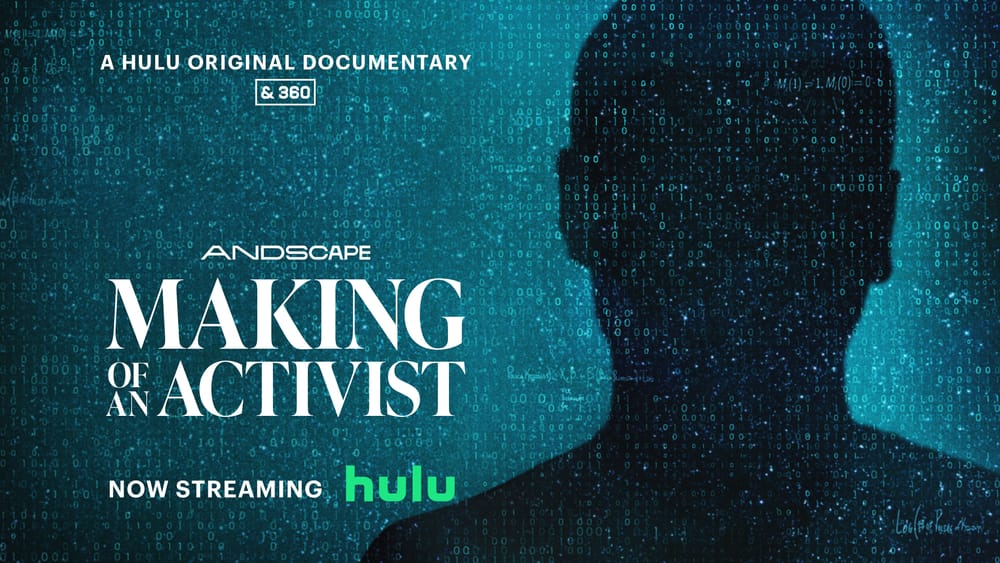There’s a recurring cycle stuck on loop every few months in America: An unarmed Black person becomes the latest hashtag at the hands of police, outrage and protest ensue, charges are levied, and the offending officers are ultimately excused with minimal (if any) consequences for their actions. Why does this keep happening? In the words of Kanye West, “The system’s working effectively, that’s why.” But the true answer is even deeper.
Andscape’s documentary series &360 is delving into this unjust American reality via its latest doc, Making of an Activist (now streaming on Hulu and Disney+). The film focuses on DeRay Mckesson’s social justice path in the aftermath of Michael Brown’s killing in Ferguson, Missouri nearly 10 years ago, on Aug. 9, 2014. He and his allies harnessed the power of data and analytics to attempt to enact lasting and meaningful change. It’s an informative 37-minute viewing that offers insight into how activism can go beyond marching, boycotts, and civil disobedience.
After watching Making of an Activist, LEVEL compiled five takeaways from the documentary. (For more depth, check out the three-part Making of an Activist companion podcast, which focuses on Mckesson's journey.)
Successful activism doesn’t stop on the streets
Mckesson stresses that while marching is a powerful tool, it often takes more than that to see change. “Protest is not the answer,” he says. “Protest creates space for the answer.”
Until recently, the federal government didn’t track American police killings
“The federal government could tell you how much rainfall there was in rural Oklahoma going back 100 years,” said Samuel Sinyangwe, a policy analyst. “They couldn’t tell you how many people were killed by the police this year, or last year, or the year before.”
Related: Don’t Expect Me to Work After Police Brutality Makes the News
One year after Brown’s death, Sinyangwe, along with Mckesson, Brittany Packnett, and Johnetta Elzie, launched Campaign Zero, a non-profit police reform organization that leaned into research and data collection to hold police accountable and search for solutions to use of force by police.
Campaign Zero’s tally of annual police homicides in America was three times more than the FBI’s estimate
Along with volunteers, members of the organization rounded up every news report of a civilian killed by police and dropped them into spreadsheets to help demonstrate the scale of police brutality in America. The process has since evolved with the help of algorithms. Still, the findings were alarming.
The FBI estimated that 400 people were killed every year by police in America. The actual figure is 1,200, which is higher than that of every other wealthy nation. The numbers are dire. Three police murders every day. Ten percent of complaints against police are sustained.
Related: Being Black Has Never Protected Us From Black Police
As the majority of America’s population, white people make up the largest demographic of victims of police murder. But Black people are three times more likely to be killed by police—and 28 times more likely in Minneapolis.
Police unions are helping officers get away with murder
If Shonda Rhimes really wanted to show you how to get away with murder, all she’d have to do is film her hit show at a police union. Due to the nature of the profession, these organizations are not like your typical labor unions. They have contracts with state governments that detail conditions of employment and disciplinary means. And—surprise, surprise—these contracts often include clauses that allow bad behavior to go unchecked. In the case of ex-Minneapolis police officer Derek Chauvin, he’d already had 18 complaints of using excessive force with no discipline or consequences before killing George Floyd by kneeling on his neck for several minutes.
In the words of Mckesson, “It’s not that police are above the law—it’s that they literally have their own.” Campaign Zero seeks to identify the most problematic clauses and have them amended. Unfortunately, it’s a notoriously difficult process.
Despite Campaign Zero’s efforts, the yearly count of citizens killed by police hasn’t decreased
The number of citizens killed by police annually has ranged from 1,100-1,300 over recent years, holding steady with the averages prior to the Campaign Zero’s formation. It’s demoralizing. Mckesson and his colleagues admit as much, while insisting they remain committed to the fight for change.
“The system is remarkably durable and it’s withstood efforts at reform,” said Sinyangwe, who has parted ways with Campaign Zero due to what he calls differences of opinion on the organization’s direction. “It needs to be radically uprooted and transformed.”
